The Stanford Medicine Experience
Learn from the Best at Stanford University's Department of Emergency Medicine
If you want to be the best, learn from the best. Advanced Emergency Medicine delivers an extraordinary opportunity to learn directly from Stanford University School of Medicine professors and staff, all fully invested in your medical education and career planning. You’ll gain remarkable insight and hands-on instruction in a unique program combining college-level lectures, workshops, case studies, and true-to-life simulations.
Immersed in the world of Stanford Medicine, you’ll have access to state-of-the art medical labs, technology, research, and equipment. With this unparalleled caliber of setting and staff, Advanced Emergency Medicine is an exceptional medical career experience that you will not want to pass up.
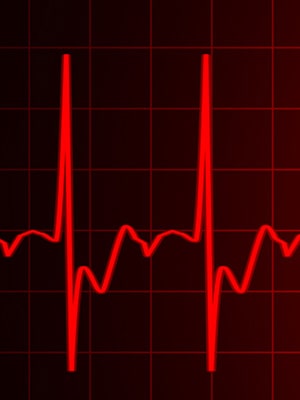 Code Black
Code Black
Reaction time can mean the difference between life and death in emergency situations. Evaluate your performance under pressure as you meet the challenge of a real-world hospital crisis simulation. Experience a Code Black:
- Patient triage and transport
- Chest compressions
- Breathing/ventilation support
- Treatment of wounds
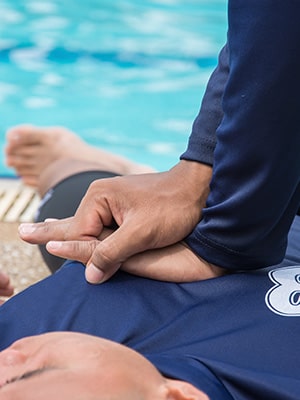
Basic Life Support (BLS) Certification
This certification from the American Heart Association will be a first step in demonstrating your abilities in Emergency Medicine! You’ll earn your certification after demonstrating your proficiency with:
- Recognizing life-threatening emergencies
- Checking vital signs
- Performing chest compressions and ventilations
- Using an automated external defibrillator (AED)
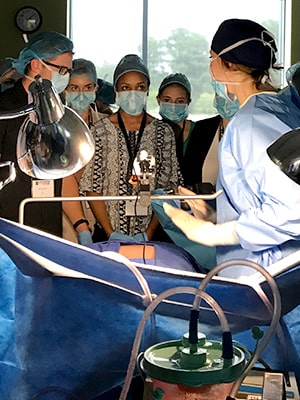
Anatomy Lab Experience
Nothing makes a medical career preparation more real than a human cadaver. At Advanced Emergency Medicine, you will experience the future physician's rite of passage: getting up close and personal with dissected cadavers in Stanford University School of Medicine's Gross Anatomy Lab. This is the quintessential medical school course – a glimpse inside an actual body.
Note for students and parents: this workshop is not for the faint of heart, but is the perfect way to assess your reactions to biology at its most real and most intense. You are unlikely to have an experience like this in any other career camp. Nor will you have a better reminder that your patients are human—and must be treated with empathy, care, and respect.
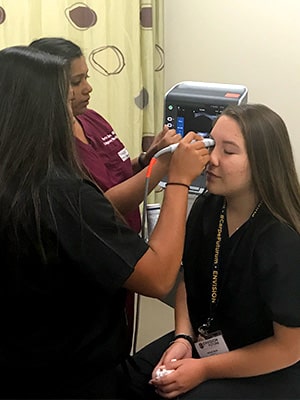
Medical Skills Training
Working rotations in small group instruction, you’ll learn:
- The ABCDE approach to assessing illness and injury
- Taking vital signs
- Conducting patient exams
- Interpreting EKGs
- Clearing patient airways
- Suturing and splinting
- Stabilizing bleeding wounds with tourniquets
- Trauma management
- Use of equipment to stabilize a patient and restrict potentially damaging movement
- Contact precautions for infectious disease management
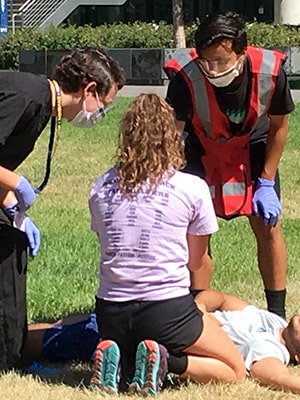 Wilderness Medicine
Wilderness Medicine
This simulation takes place during an outdoor wilderness hike, as you learn to handle emergency scenarios outside the hospital walls, such as:
- Patient evacuation
- Altitude sickness
- Broken bones and lacerations
- Symptoms of exposure to heat and cold
- Treatment of potentially fatal snake and insect bites
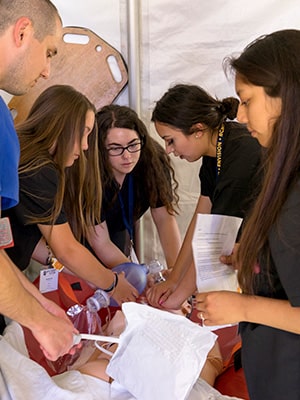
Disaster Medicine
Disaster medicine is both harrowing and highly rewarding. Through a combination of dynamic discussions, demonstrations and an outdoor group disaster simulation, you’ll gain real-world insights about:
- Real-life disaster scenarios such as Hurricane Katrina, the Haiti earthquake, the Miracle on the Hudson, and the Orlando shootings
- The role of medical teams during disasters
- How to perform disaster triage
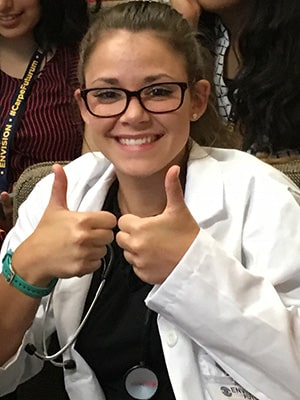
Plot a Course to Your Future
Your future career involves many key decisions, including picking your specialty. The Advanced Emergency Medicine curriculum offers a multi-day, collaborative simulation in which you will:
- Handle a team case-study review of medical school candidates
- Understand medical school admissions and qualifying tests
- Draft an impressive resume
- Explore your range of options in emergency medicine fields
- Acquire professional skills, such as networking and personal branding
- Construct a profile of the ideal emergency medicine physician
Choosing the right career and achieving your career dreams includes many challenges and opportunities. We hope that you will take this opportunity to get ahead, as you prepare for admittance to medical school and success in your future career in medicine.